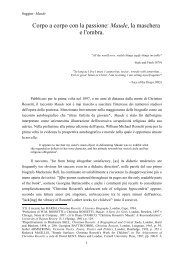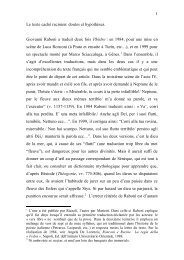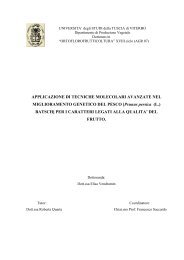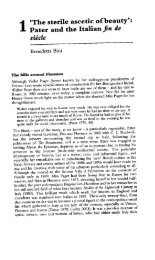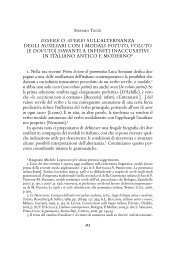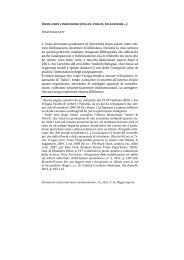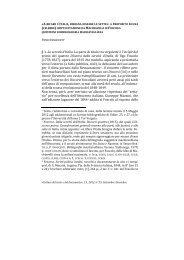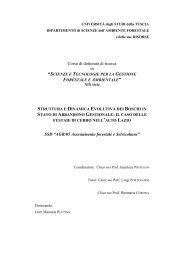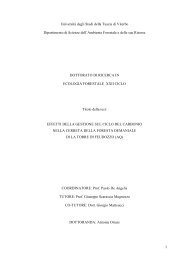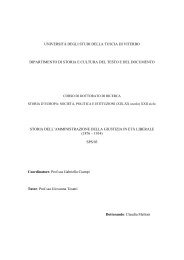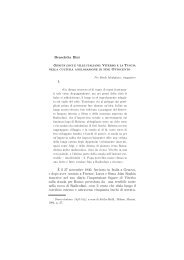drivers of soil respiration of root and microbial ... - Unitus DSpace
drivers of soil respiration of root and microbial ... - Unitus DSpace
drivers of soil respiration of root and microbial ... - Unitus DSpace
You also want an ePaper? Increase the reach of your titles
YUMPU automatically turns print PDFs into web optimized ePapers that Google loves.
5.1. Introduction<br />
122<br />
Nitrogen (N) alongside carbon (C) is the element needed in greatest abundance by lower <strong>and</strong><br />
higher plants. Due to losses by leaching <strong>and</strong> <strong>microbial</strong> consumption, N is <strong>of</strong>ten a limiting factor for<br />
plants, especially in <strong>soil</strong>s with temperate <strong>and</strong> humid climates. Therefore, plants have developed<br />
mechanisms to cope with the low N supply. These include very sensitive uptake systems <strong>and</strong><br />
possibility to grow on various N sources. The main N sources include ammonium (NH + 4) <strong>and</strong><br />
nitrate (NO - 3) (Tischner, 2000) however, in some environments amino acids are considered as<br />
significant organic N source (Nasholm et al., 2000; Xu et al., 2006).<br />
Utilization <strong>of</strong> N in the form <strong>of</strong> either nitrate (NO - 3) or ammonium ions (NH4 + ) may affect the<br />
carbohydrate metabolism <strong>and</strong> energy economy <strong>of</strong> the plant (Blacquiere, 1987). NH4 + is fixed by<br />
GS/GOGAT pathway into amino acids (glutamine/glutamate), this incorporation occurs<br />
immediately after N uptake in <strong>root</strong>s <strong>and</strong> no significant amount <strong>of</strong> ammonium have ever been<br />
discovered in the xylem sap (Tischner, 2000). In the case <strong>of</strong> NO3 - as N-source is well established<br />
that it is taken up by <strong>root</strong>s <strong>and</strong> its reduction occur in both <strong>root</strong>s <strong>and</strong> shoots <strong>of</strong> higher plants<br />
(Beevers, 1980). Reduction <strong>of</strong> NO - 3 to NH4 + , catalyzed by nitrate <strong>and</strong> nitrite reductase enzymes,<br />
together with subsequent assimilation <strong>of</strong> NH4 + is among the most energy-intensive processes in<br />
plants <strong>and</strong> in some cases is accompanied by additional <strong>respiration</strong>.<br />
However, there are still active debates on the effect <strong>of</strong> the N source on <strong>root</strong> <strong>respiration</strong>, as<br />
attempts to explain it experimentally have led to arguable results supporting different hypotheses.<br />
Some authors suggest that, when compared to NO3 - nutrition, NH4 + nutrition stimulates the rate <strong>of</strong><br />
<strong>root</strong> <strong>respiration</strong>, attributing this increase to the stimulation <strong>of</strong> alternative pathway activity (Barneix<br />
et al. 1984; Blacquière 1987, Lasa et al., 2002). There are two pathways involved in <strong>respiration</strong>: the<br />
phosphorylating cytochrome <strong>and</strong> the nonphosphorylating alternative pathway. The physiological<br />
role <strong>of</strong> the latter is not clear but several authors suggest that this alternative pathway could avoid the<br />
overreduction <strong>of</strong> the electron transport chain <strong>and</strong> the subsequent production <strong>of</strong> reactive oxygen<br />
species (Purvis <strong>and</strong> Shewfelt 1993). Thus, this pathway could allow oxidation <strong>of</strong> TCA cycle<br />
reductant, maintaining TCA cycle carbon flow for provision <strong>of</strong> biosynthetic intermediates for NH4 +<br />
ion assimilation.<br />
On the other h<strong>and</strong>, NO3 - coming to the plant before assimilation have to be firstly reduced to<br />
NH4 + , <strong>and</strong> this process, together with assimilation, is among the most energy-intensive processes in<br />
plants, in some cases followed by an additional CO2 evolution (Atkins et al., 1979; Aslam <strong>and</strong><br />
Huffacker, 1982; Ninomyia <strong>and</strong> Sato, 1984; Warner <strong>and</strong> Kleinh<strong>of</strong>s, 1992; Blacquiere, 1987;<br />
Tischner, 2000). The process proceeds in two steps: conversion <strong>of</strong> NO3 - to NO2 - <strong>and</strong> the following<br />
conversion <strong>of</strong> NO2 - to NH4 + . In illuminated leaves, both processes are coupled to photosynthetic<br />
electron transport. However, in <strong>root</strong>s <strong>and</strong> during darkness, reducing equivalents are generated by




